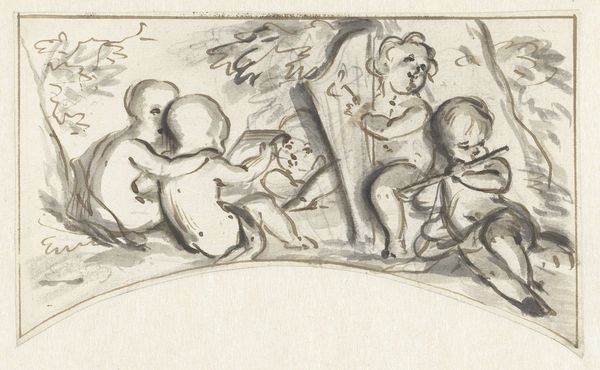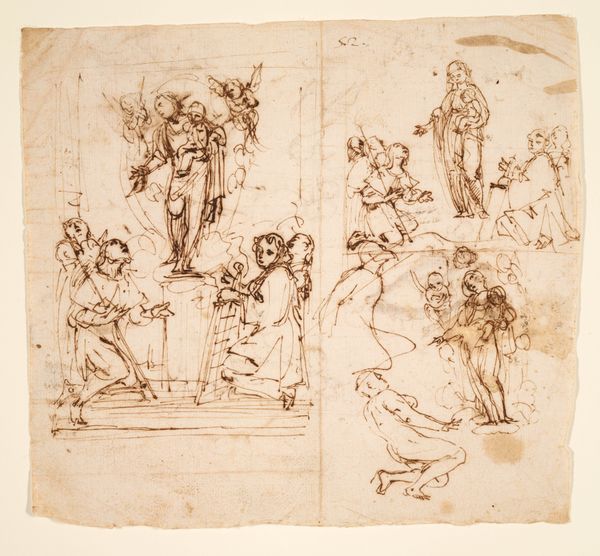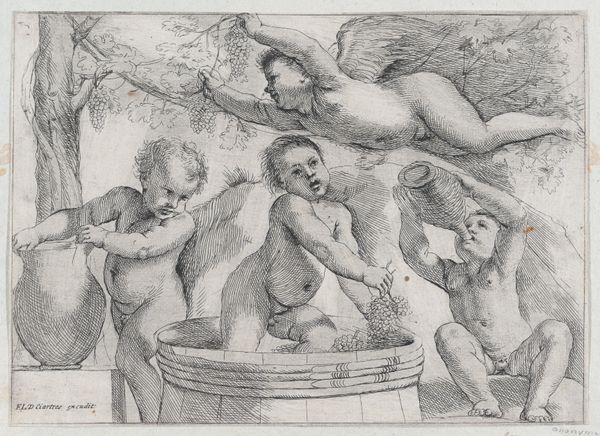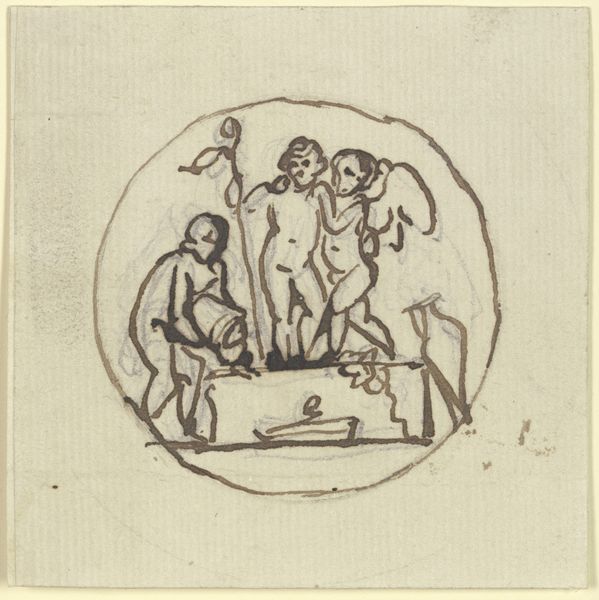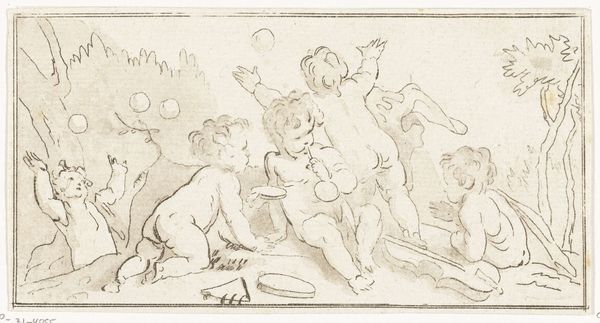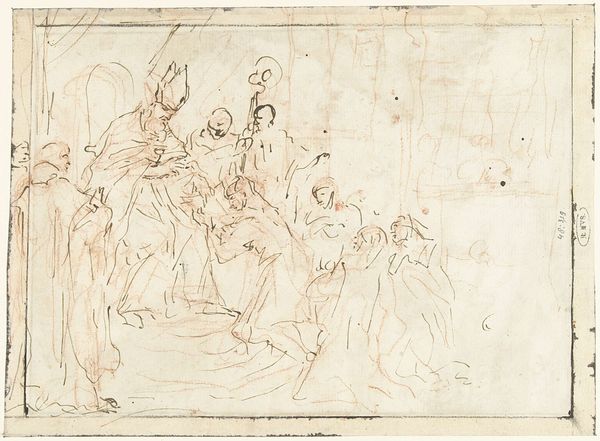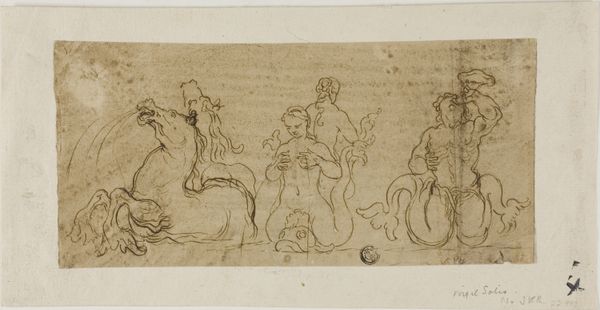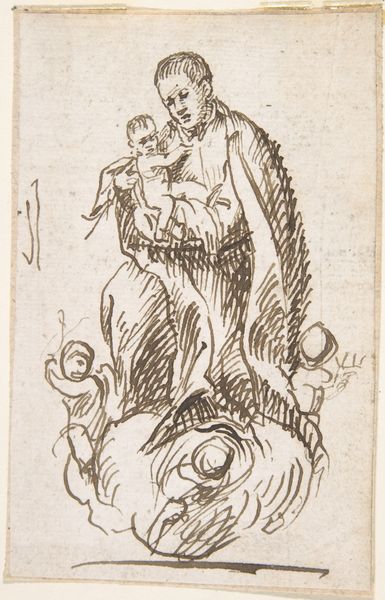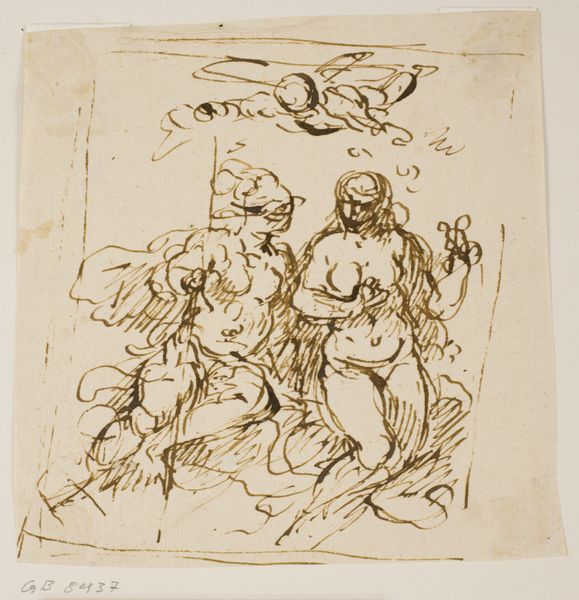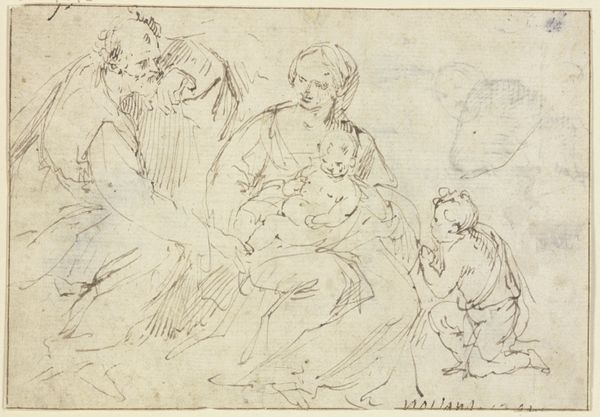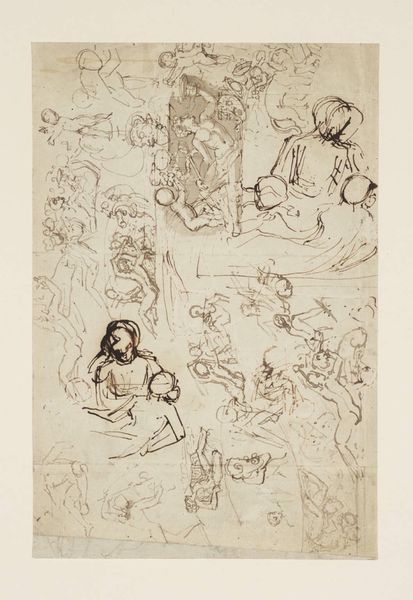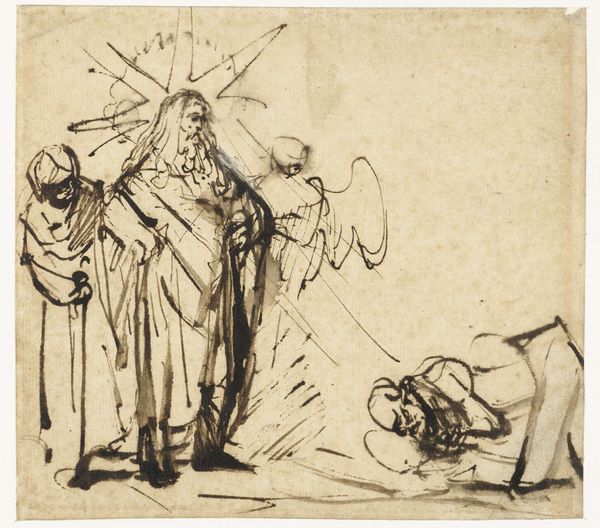
Veronica's Veil Held by Two Angels and God the Father(?) 1600 - 1700
0:00
0:00
drawing, print
#
drawing
#
toned paper
#
light pencil work
#
ink drawing
#
ink painting
# print
#
pencil sketch
#
ink drawing experimentation
#
underpainting
#
pen-ink sketch
#
watercolour illustration
#
watercolor
#
angel
Dimensions: 5-7/8 x 6-7/8 in. (15 x 17.5 cm)
Copyright: Public Domain
Editor: This is an interesting drawing; it’s titled "Veronica's Veil Held by Two Angels and God the Father(?)," dating back to sometime in the 17th century. It's currently held at The Met. It has this unfinished, sketch-like quality that feels very intimate. I'm curious about what stories or histories you see embedded within it? Curator: Well, first, I’m struck by how this seemingly straightforward religious scene—Veronica's Veil—can actually be viewed as a powerful intersection of gender, religion, and representation. The veil itself, bearing the supposed imprint of Christ's face, is a fascinating object of both devotion and control. Editor: Control? Could you expand on that a bit? Curator: Absolutely. Throughout history, images, especially religious ones, have been tools for shaping belief and social order. Who controls the narrative around this image of Christ? Whose version of the story is told, and whose is suppressed? Notice how God the Father, a paternalistic figure, literally overshadows the entire scene, suggesting perhaps, the patriarchal structure of the church? Editor: That's a powerful reading. I hadn't considered the implications of that overshadowing. But what about Veronica herself? Is she not central here? Curator: In a way, yes, but her active role is simultaneously emphasized and erased. She’s revered for her compassionate act of offering the veil, yet her actual voice and agency are minimized. Consider the politics of display—two angels hold the veil, acting as guardians or interpreters of the sacred image. This removes Veronica from directly confronting us, which in turn limits our reading of her. Editor: It's almost like she is the tool, and God the Father holds her tools as well as the scene itself. Curator: Precisely. So, what initially appears as a simple devotional image unfolds into a complex tapestry of power dynamics and negotiated meanings, raising critical questions about whose stories are told, and how. Editor: This has really opened my eyes to looking beyond the immediate subject matter. I really thought it was a kind depiction of an act of compassion. Curator: Art always functions within its socio-political context. Understanding that relationship, you are better prepared to see what is hidden.
Comments
No comments
Be the first to comment and join the conversation on the ultimate creative platform.
